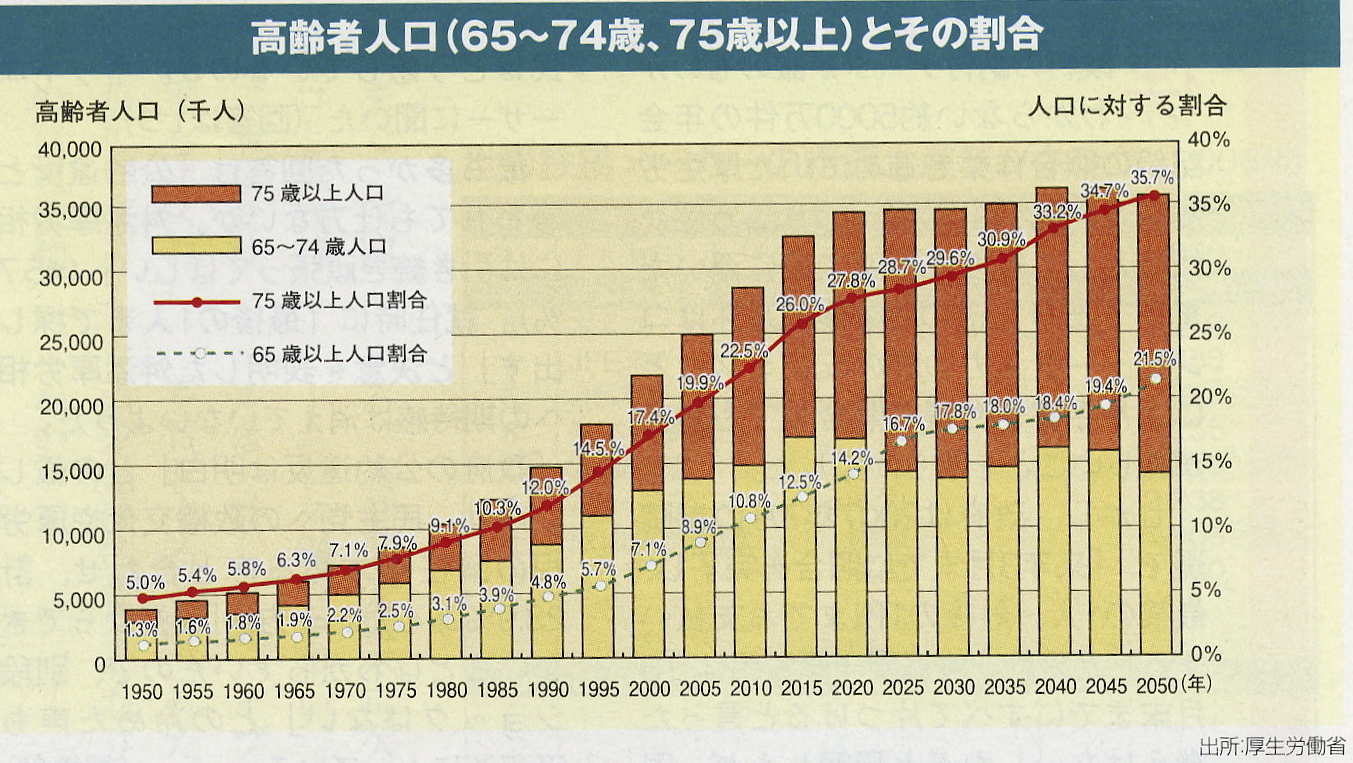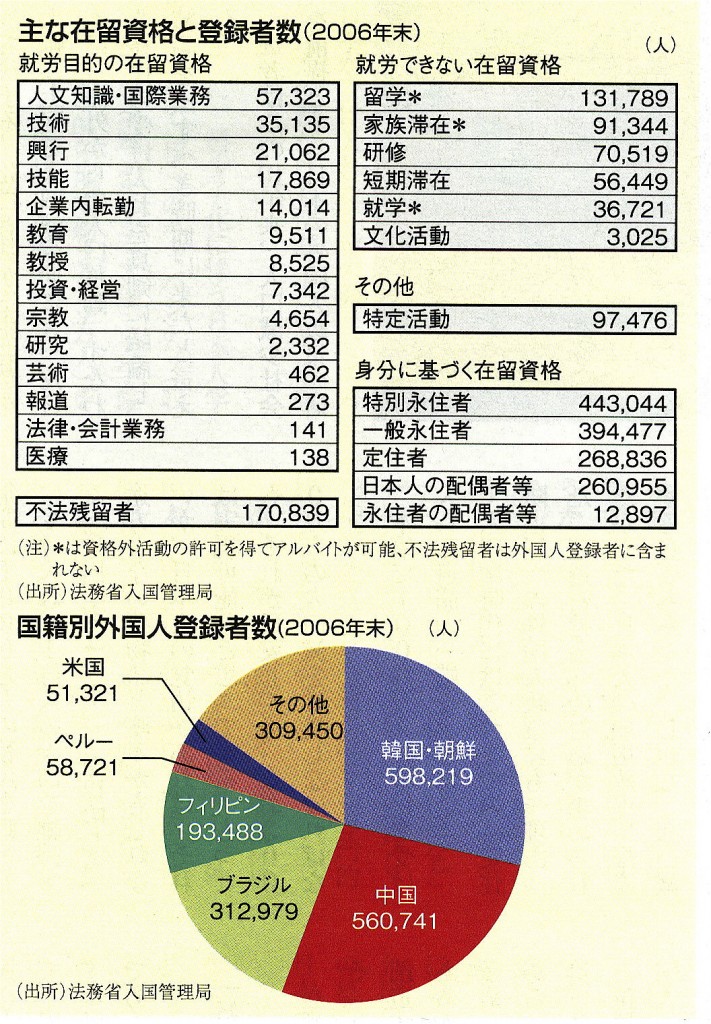mytest






Hi Blog. Today’s entry is part of an occasional series called “Fun Facts”, where I come across a statistic so unzipping of reality that it bears memorizing. True “Fun Facts” are fun both in their predictive power and in describing how things got to where they are today. See what I mean by looking at previous Fun Facts on this blog.
The facts I will talk about today are about the future. While researching stuff on Debito.org, I realized that one source I quote often in my powerpoint presentations has never been blogged: An Ekonomisuto Japan article, dated January 15, 2008, with an amazing estimate.
UPDATE: Some corrections made, courtesy James Annan. Incorrect text crossed out.
The yellow bar (left-hand scale) indicates the population of people aged 65-74 in given years. The orange bar (same scale) indicates population of people aged 75 and up. The dotted line (right-hand scale) indicates percentage of population those people aged 65-74 would take up in those given years. The red line same for people aged 75 and up ([including the 65-74 age bracket]).
[Thus] The Ministry of Health, Labor and Welfare estimates that well more than half of the J population (57.2%, as in 21.5% +35.7%) well over a third of the Japanese population (35.7%) will be over 65 years of age by 2050, and the majority of those oldies will be well beyond a working age. Can you imagine over a third of a population above 75 65 years of age? Who works and who pays taxes, when most this many people are retired on pensions or should be? That’s if trends stay as they are, mind. That’s why the GOJ has changed its tune to increasing the NJ population. We’re talking a demographic juggernaut that may ultimately wipe out this country’s productivity and accumulated wealth.
Although this is more estimate than “fun fact”, it is still the MHLW’s estimate, and as such worthy of consideration. But if you want more fun, consider these numbers about NJ working visas from the same Ekonomisuto article of last January. Their source: MOJ Immigration Bureau, as of the end of 2006.
Topping the list of people who can work in the top left-hand column are the “Specialist in Humanities/International Services” (i.e. language teachers). Then we have “Engineers” (as in System Engineers) , “Entertainers” (as in, in many cases, human trafficking), “Skilled Laborers” (contract workers in factories, but not Trainees), and on down. The numbers are for numbers of individuals.
The right-hand column is for people who cannot work, topped by “Exchange Students”, “Dependents”, “Trainees” (who do work but aren’t counted as “laborers”, as they are not covered by labor laws) on down. Below that are the six-digit numbers for people who can work without restrictions: The Zainichis (Special Permanent Residents), the Regular Permanent Residents (immigrants, fast gaining), the Long-Term Residents (as in the Nikkei Brazilians etc.), Spouses of Japanese Nationals etc.
What I don’t get is that the media reports that “The number of people entering Japan to become trainees had been increasing since the foreign trainee system started in 1993, topping 100,000 in 2007.” So, well, where are they in the numbers above? I only see 70,519. Anyway, companies are slashing their Researcher and Trainee numbers, so I think we might even see a fall in the number of NJ residents in Japan for the first time in four decades
Illegal overstayers are estimated at 170,839, but their numbers keep dropping.
Who’s here from what country is in the pie chart, sourced from Immigration. The numbers (2006) are indeed now historical, as the Chinese surpassed the Koreans to become the number one ethnic minority in Japan for the first time in 2007. Third are Brazilians, then The Philippines, Peru, the US, and then a whopping number of “others”.
NOTE: the top numbers (visas) and the bottom numbers (pie chart) don’t add up to each other (they’re not counting some of the more obscure visa statuses, like Diplomat). I’m not sure what the American military on their bases in Japan are counted as.
There are some estimates and Fun Facts. A bit historical, but they give some idea of scale. Have fun. Arudou Debito in Sapporo.


2 comments on “Fun Facts #11: Ekonomisuto estimates 35% of Japan’s population will be over 65 by 2050”
The first graphic is clearly mislabelled and as a result your interpretation is not quite right. The higher line (reaching ~35%) seems to be the total %age above 65 (*including* the over-75s), the lower line is the %age above 75 (a subset of the higher value, not additive to it). Of course 35% over 65 is still an amazing enough figure, nearly double the current 20% in this age bracket which is the highest in the world!
Very similar numbers are presented here:
http://www.stat.go.jp/english/data/handbook/c02cont.htm
James
— Thanks James. Quite right. Sorry. Have made corrections. Hazukashii Debito
It’s interesting to put these figures within a global context and specifically to recall that by around 2050, the world population is expected to reach nine billion, essentially adding two Chinas to the number of people alive today. So, as there will be fewer and fewer productive hands in Japan, the world will be brimming with souls in need of labor and resources. You can’t imagine conditions more likely to put pressure on the restrictive immigration and integration policies of the nation.